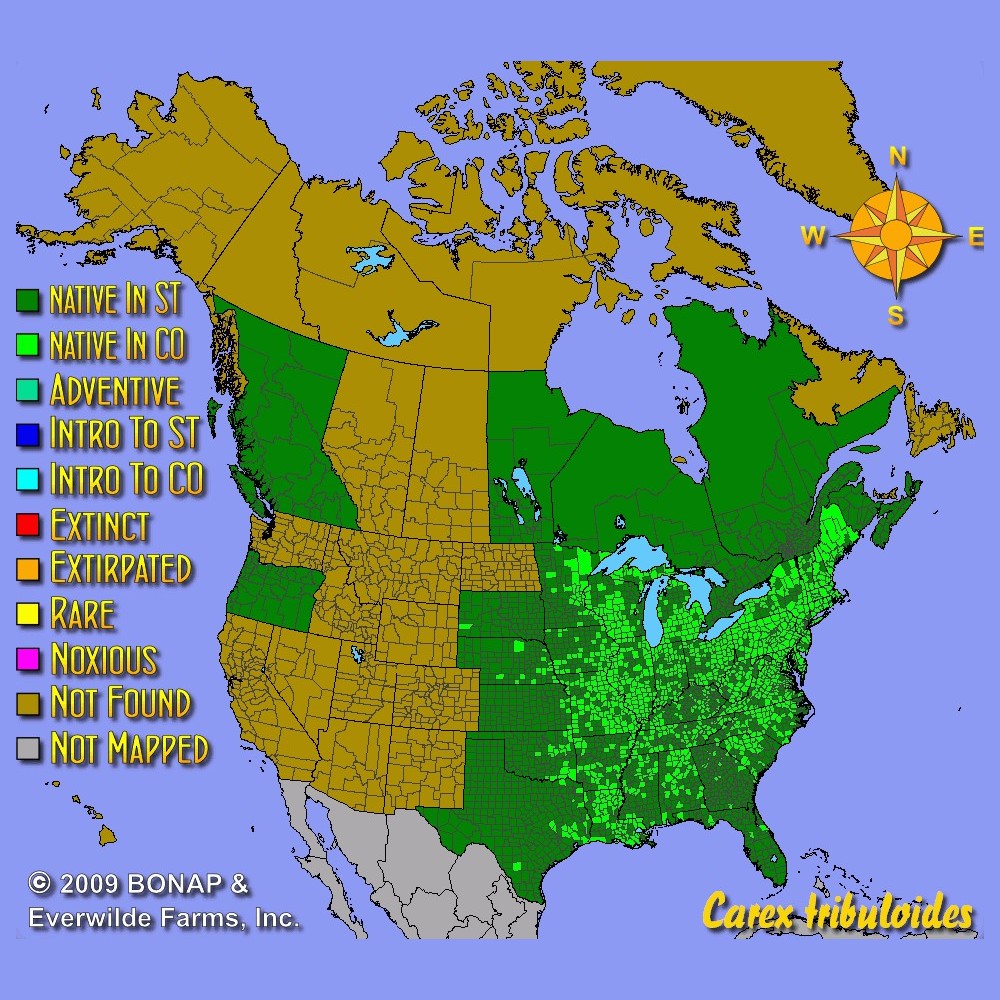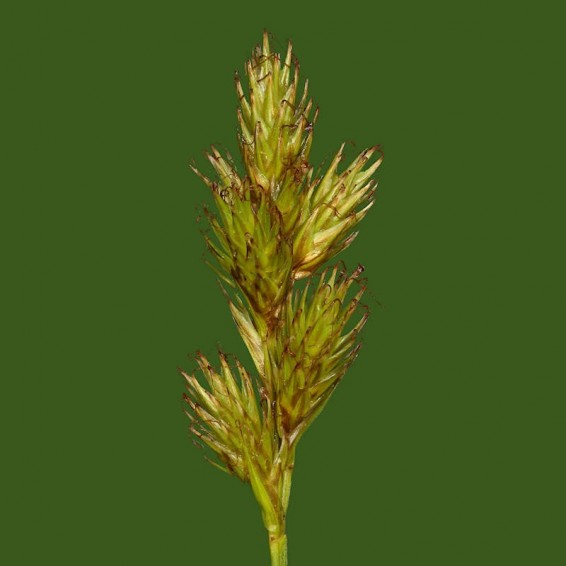Awl fruited Oval Sedge Seeds
Carex tribuloides
- HOW TO GROW
- FAST FACTS
HOW TO GROW
Sowing: Direct sow either in late fall or early spring. Plant the Carex Tribuloides seed just below the surface of the soil, compacting the soil very firmly. For spring planting, mix the awl fruited sedge seeds with moist sand and store them in the refrigerator for 60 days before planting. Keep the soil lightly moist until germination, since this seed cannot germinate in dry soil.
Growing: Water seedlings regularly until they become established. This plant thrives in moist or wet soil, even shallow standing water and seasonal flooding. It also adapts well to a variety of soil types including sand, gravel, or rocky soil. It spreads by rhizomes to form a natural colony. It makes an excellent choice for shade ground cover, as well as being popular for rain gardens, stream banks, and wetland restoration. The Carex Tribuloides plant provides cover and forage for small birds and other wildlife.
Seed Saving: At the end of the season, the seed heads will begin to turn from green to brown. Remove them as soon as they ripen to their mature brown color, and spread them out to dry. Thresh them to separate the seed from the stems. Store the awl fruited sedge seed in a cool, dry place.
FAST FACTS
Common Names: Blunt Broom Sedge
Latin Name: Carex tribuloides
Species Origin: US Native Grass or Sedge
Type: Native Grasses, Cool Season
Life Cycle: Perennial
USDA Zones: 2, 3, 4, 5, 6, 7, 8, 9
US Regions: Plains/Texas, Midwest, Northern, Northeast, Southeast
Seeds per Ounce: 119,000
Stratification: Cold/Wet for 8 Weeks
Germination Ease: Stratify 8 Weeks
Sunlight: Full Sun, Part Sun
Height: 30 Inches
Color: Green, Brown
Bloom Season: Blooms Early Summer
DESCRIPTION

HOW TO GROW
Sowing: Direct sow either in late fall or early spring. Plant the Carex Tribuloides seed just below the surface of the soil, compacting the soil very firmly. For spring planting, mix the awl fruited sedge seeds with moist sand and store them in the refrigerator for 60 days before planting. Keep the soil lightly moist until germination, since this seed cannot germinate in dry soil.
Growing: Water seedlings regularly until they become established. This plant thrives in moist or wet soil, even shallow standing water and seasonal flooding. It also adapts well to a variety of soil types including sand, gravel, or rocky soil. It spreads by rhizomes to form a natural colony. It makes an excellent choice for shade ground cover, as well as being popular for rain gardens, stream banks, and wetland restoration. The Carex Tribuloides plant provides cover and forage for small birds and other wildlife.
Seed Saving: At the end of the season, the seed heads will begin to turn from green to brown. Remove them as soon as they ripen to their mature brown color, and spread them out to dry. Thresh them to separate the seed from the stems. Store the awl fruited sedge seed in a cool, dry place.
FAST FACTS
Common Names: Blunt Broom Sedge
Latin Name: Carex tribuloides
Species Origin: US Native Grass or Sedge
Type: Native Grasses, Cool Season
Life Cycle: Perennial
USDA Zones: 2, 3, 4, 5, 6, 7, 8, 9
US Regions: Plains/Texas, Midwest, Northern, Northeast, Southeast
Seeds per Ounce: 119,000
Stratification: Cold/Wet for 8 Weeks
Germination Ease: Stratify 8 Weeks
Sunlight: Full Sun, Part Sun
Height: 30 Inches
Color: Green, Brown
Bloom Season: Blooms Early Summer




